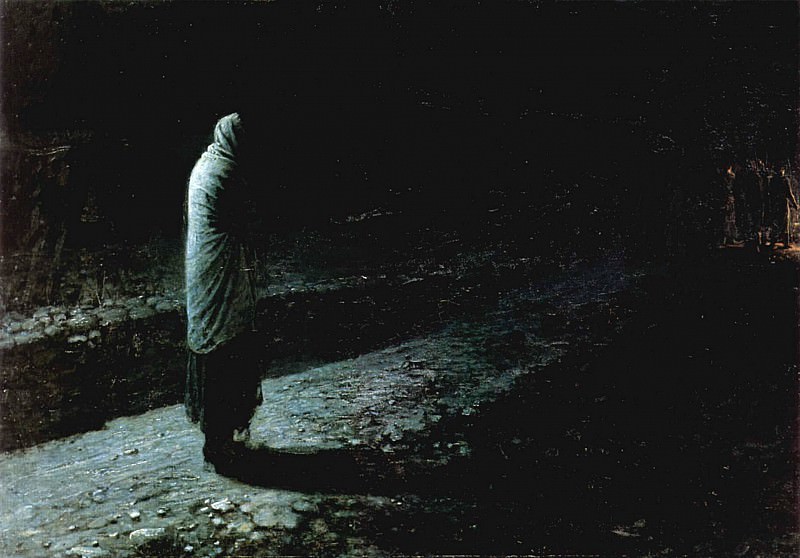Conscience. Judas Nikolay Ge (1831-1894)
Nikolay Ge – Conscience. Judas
Edit attribution
Download full size: 2089×1455 px (0,2 Mb)
Painter: Nikolay Ge
1891; canvas, oil; 149×210; Tretyakov Gallery. Painting "Conscience. Judas by Nikolai Nikolaevich Ge refers the viewer to the biblical story of the thirteenth apostle who sold his Master for thirty silver coins. The exposition, tones and colors used to create this painting are very peculiar: the dark, almost black painting suppresses and disturbs by its gloomy and oppressive atmosphere, and only a tiny glimmer of live, warm light flickers in the distance.
Description of the painting "Conscience" by Nikolai Ge. Judas."
1891; canvas, oil; 149×210; Tretyakov Gallery.
Painting "Conscience. Judas by Nikolai Nikolaevich Ge refers the viewer to the biblical story of the thirteenth apostle who sold his Master for thirty silver coins. The exposition, tones and colors used to create this painting are very peculiar: the dark, almost black painting suppresses and disturbs by its gloomy and oppressive atmosphere, and only a tiny glimmer of live, warm light flickers in the distance. There, where the barely discernible figures of people have gone away along the stone road.
The central character of the painting, in which Judas is identified, stands in the foreground, with his back to the viewer, wrapped entirely in a long robe. He is completely hidden, but even his posture expresses the desolation of dashed hopes. The deal has not enriched him, Judas is lonely and abandoned. He stands in the pale light of the moon, staring into the distance, at the life that is slowly leaving him along with the group of men who are taking Christ to the coming judgment and crucifixion. In these moments, he seems to be acutely aware of the breakdown of his soul, remembering what he owned, which is now completely lost to him. Judas is cut off from human society, which can be seen in every small detail of the painting.
His loneliness and alienation are emphasized by the play of light and shadow. The expressiveness of the composition is particularly striking with the contrast of the artist’s chosen lighting. The two points to which the eye, against its will, draws attention. The large spot of whitish night light, ghostly and cold, in which Judas is bathed, is as if contrasted with the warm, lively, though alarming, glow of the fire carried by the people in the far part of the painting.
The composition of the sketch is interesting: the road and the two points of light create a straight tunnel, traveling through which the viewer’s gaze is as if immersed in the world created by the artist’s brush.
Кому понравилось
Пожалуйста, подождите
На эту операцию может потребоваться несколько секунд.
Информация появится в новом окне,
если открытие новых окон не запрещено в настройках вашего браузера.
You need to login
Для работы с коллекциями – пожалуйста, войдите в аккаунт (open in new window).




















COMMENTS: 1 Ответы
Вечная тема предательства.
Неискренность по отношению к другим людям даже совсем маленькая – это тоже предательство.
Бесчисленное количество предательств каждый день во всем. Предает государство на различных уровнях, предают СМИ, предают родные и близкие, посторонние. Даже самый маленький и незначительный обман – это предательство.
You cannot comment Why?